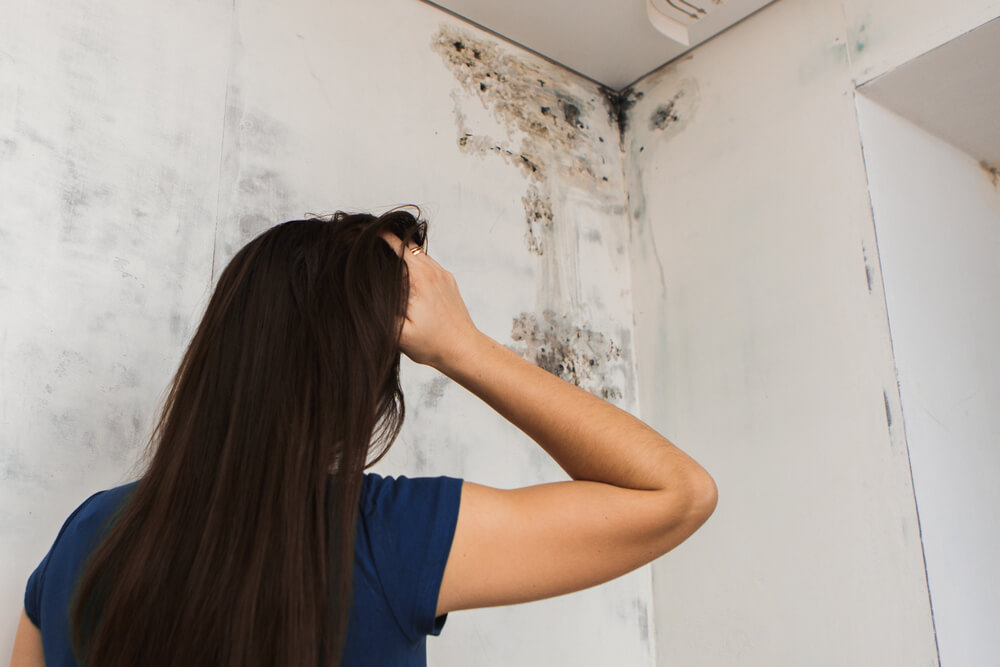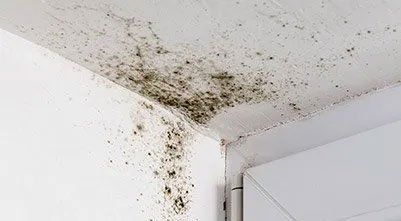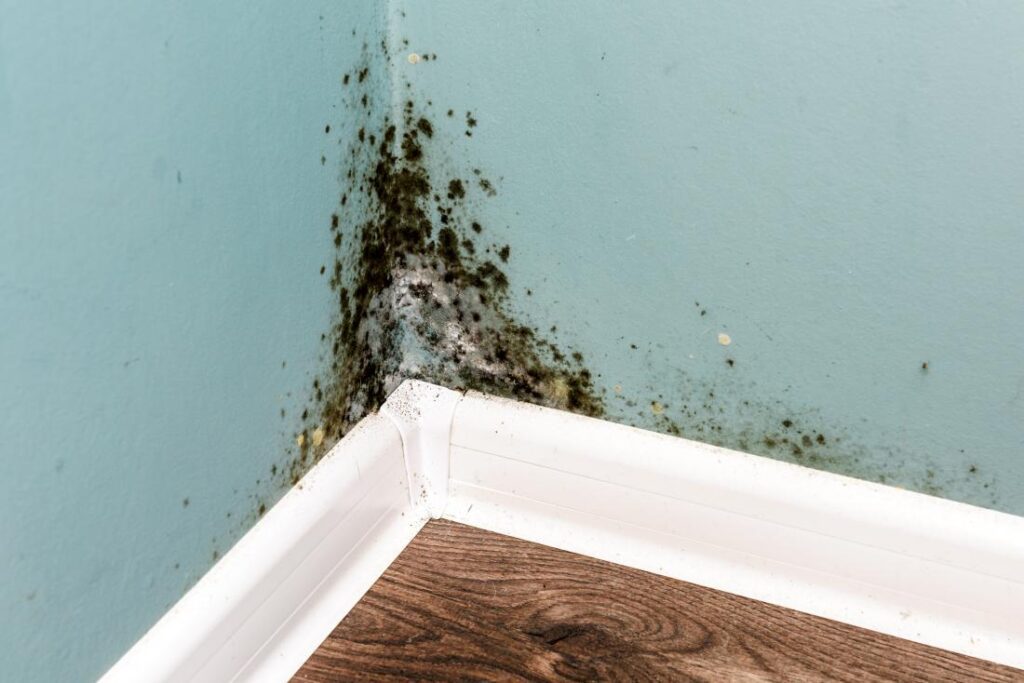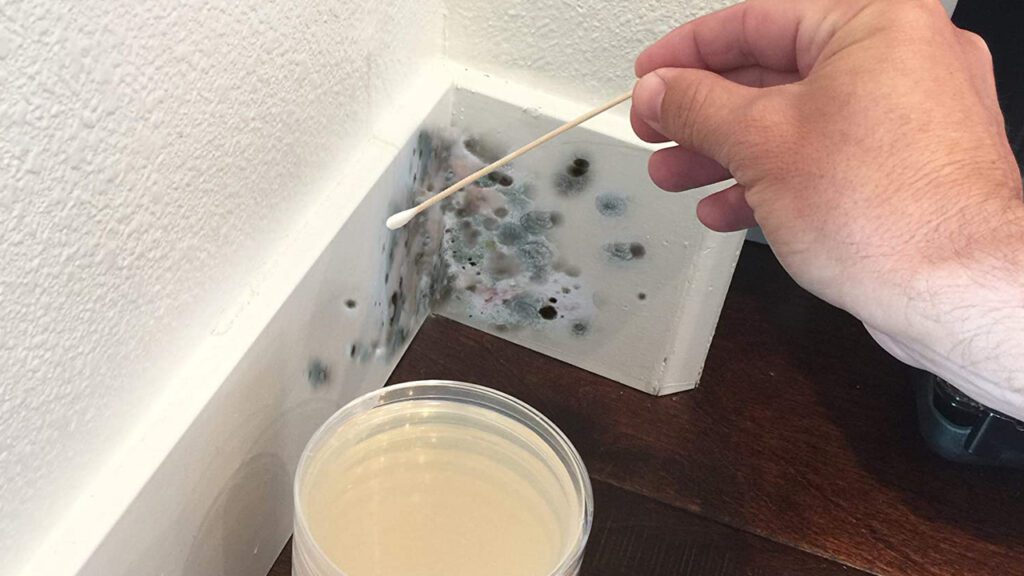Having mold in your walls can be a serious issue that requires immediate attention. Not only can it cause health problems for you and your family, but it can also lead to structural damage if left untreated. In this article, we will explore some key signs that can indicate the presence of mold in your walls, helping you to take the necessary steps to address the problem and ensure a safe living environment for everyone. If you suspect that your house may have mold in the walls, it is important to be aware of the signs to look out for. Mold can be harmful to both your health and the structural integrity of your home. By understanding these signs, you can take necessary actions to address any mold issues in a timely manner.

Visible Signs
One of the most obvious signs of mold in the walls is visible growth. Mold can appear as black or green spots on the walls, typically in damp areas. Discoloration of the walls, such as yellow or brown stains, can also indicate the presence of mold. If you notice a fuzzy or powdery texture on the walls, it is likely mold growth. Additionally, visible water damage, such as peeling paint or wallpaper, can be a clear indication of mold in the walls.
Musty Odor
Another sign to be aware of is a musty odor. Mold has a distinctive smell that is often described as earthy or damp. If you notice a persistent musty odor in certain areas of your home, particularly near walls or in enclosed spaces, it could be an indication of mold growth. This odor may be more noticeable in humid environments or after rainfall.

Respiratory Symptoms
If you or your family members are experiencing respiratory symptoms that seem to be persistent or worsen when spending time in certain areas of your home, mold could be the culprit. Common respiratory symptoms associated with mold exposure include nasal congestion, persistent coughing, sneezing, wheezing, and shortness of breath. These symptoms may be more pronounced for individuals with allergies or asthma.
Water Damage
Water damage is often a catalyst for mold growth. If you have experienced leaking pipes, roof leaks, foundation cracks, or any other form of water intrusion in your home, there is a higher likelihood of mold developing in the walls. Mold thrives in moist environments, and if left unaddressed, water damage can create the perfect conditions for mold growth.

Peeling Paint or Wallpaper
Peeling paint or wallpaper can not only be an aesthetic issue but also a sign of potential mold in the walls. Bubbling, cracked, or peeling paint can occur due to moisture behind the walls, which can lead to mold growth. Similarly, deteriorating wallpaper may indicate hidden mold. It is important to investigate the underlying cause of these issues to determine if mold is present.
Dampness and Humidity
Dampness and high humidity levels provide an ideal environment for mold growth. If certain areas of your home feel consistently damp, even after thorough cleaning or ventilation, it may be an indication of mold in the walls. Additionally, if you live in a region with high humidity or have poor ventilation in your home, the risk of mold growth is increased.
Allergic Reactions
For individuals who are sensitive or allergic to mold, exposure can trigger allergic reactions. If you experience itchy or watery eyes, skin irritation, nasal and sinus congestion, sore throat, or headaches that seem to be more prevalent when you are at home, it is worth considering the possibility of mold in the walls. Allergic reactions can vary in severity and can be an important indicator of mold presence.
Prevalence of Mold in the Area
The prevalence of mold in your area can also be a factor to consider when assessing the likelihood of mold in your walls. If you live in an area with high humidity, frequent rainfall, or known mold issues, it increases the chances of mold growth in your home. Take into account the local climate and history of mold problems in your region when evaluating the potential presence of mold in your walls.

Previous Mold Problems
If your home has had previous issues with mold, such as water damage or leaks that were not properly addressed, there is a higher chance of mold recurring in the walls. Past mold remediation efforts may not have completely eradicated the problem, leading to persistent mold growth. It is important to thoroughly inspect the walls and address any underlying issues to prevent further mold problems.
Unexplained Health Issues
If you or your family members are experiencing unexplained health issues that cannot be attributed to any other known cause, it is worth considering the possibility of mold in the walls. Mold exposure can have a range of health effects, including respiratory problems, allergies, and even more severe complications for individuals with weakened immune systems. If you notice a pattern of health issues that improve when outside of your home, it may be time to investigate for mold.
Now that you are familiar with the signs of mold in the walls, let’s explore the methods to detect mold and identify its presence.
Visual Inspection
Visual inspection is one of the primary methods to detect mold in the walls. Carefully examine the walls, paying attention to areas with visible signs of mold, such as black or green spots, discoloration, fuzzy or powdery texture, staining, or visible water damage. Take note of any areas that appear suspicious and consider investigating further.
Smell Test
If you notice a musty odor in your home, you can perform a smell test to identify potential mold growth. Walk around different areas of your home and pay attention to any localized smells that are persistent and have an earthy or damp quality. Follow your nose to pinpoint areas that may require further investigation.
Use of Moisture Meters
Moisture meters are handy tools that can help identify areas of excess moisture in your walls, which can be an indication of potential mold growth. These devices measure the moisture content in materials and provide readings that can help identify areas that require further investigation. Moisture meters are especially useful for detecting hidden moisture behind walls.
Thermal Imaging
Thermal imaging cameras can be utilized to detect temperature variations in the walls. These variations can be indicative of areas with excess moisture and potential mold growth. By detecting temperature anomalies, thermal imaging can help identify hidden or inaccessible areas where mold may be present.
Air Sampling
Air sampling involves collecting samples from the air in different areas of your home and analyzing them for mold spores. This method is useful in determining the level of airborne mold spores and identifying the type of mold present. Air sampling can be done by professionals using specialized equipment or through DIY mold test kits.
Wall Cavity Inspection
Inspecting the wall cavities can help identify hidden mold that is not visible on the surface. This method involves removing sections of the wall to access the area behind and thoroughly inspect for any signs of mold growth. Wall cavity inspection may require professional assistance to ensure proper assessment and minimize damage to the walls.
Professional Mold Testing
If you suspect a significant mold issue in your walls, it may be necessary to hire professional mold testing services. These experts have the knowledge, experience, and specialized equipment to accurately identify and assess mold in your walls. Professional mold testing can provide comprehensive results and help guide the appropriate remediation measures.
DIY Mold Test Kits
For a preliminary assessment or if you prefer a do-it-yourself approach, mold test kits are available for home use. These kits typically include swabs or adhesive strips to collect samples from suspected areas. The samples can then be sent to a laboratory for analysis. Although these kits can provide initial insights, professional testing is recommended for more accurate results.
Identifying Hidden Mold
Mold can often hide in hard-to-reach or concealed areas, making detection challenging. If you suspect hidden mold in your walls, it is important to investigate further. Look for signs of moisture, such as discolored patches, sagging walls, or a musty odor emanating from certain areas. Professional assistance may be required to accurately identify and address hidden mold.
Professional Mold Remediation
If you have confirmed the presence of mold in your walls, it is crucial to address the issue promptly and effectively. Professional mold remediation services can help remove the mold safely and completely, minimizing the risk of reoccurrence. These professionals have the expertise and equipment to ensure thorough remediation and restoration of your home.
In conclusion, knowing the signs of mold in the walls is essential for maintaining a healthy living environment. By being aware of visible signs, musty odors, respiratory symptoms, water damage, peeling paint or wallpaper, dampness and humidity, allergic reactions, previous mold problems, and unexplained health issues, you can take the necessary steps to detect and address mold growth in your home. Whether through visual inspection, smell tests, specialized equipment, or professional assistance, detecting mold in the walls allows for timely remediation and ensures the well-being of you and your loved ones. Remember, prevention and prompt action are key when it comes to mold-related issues in your home.